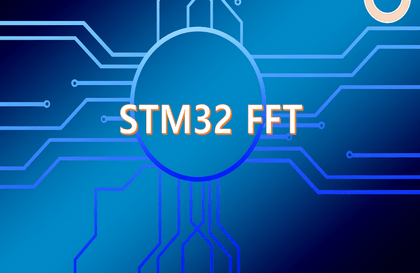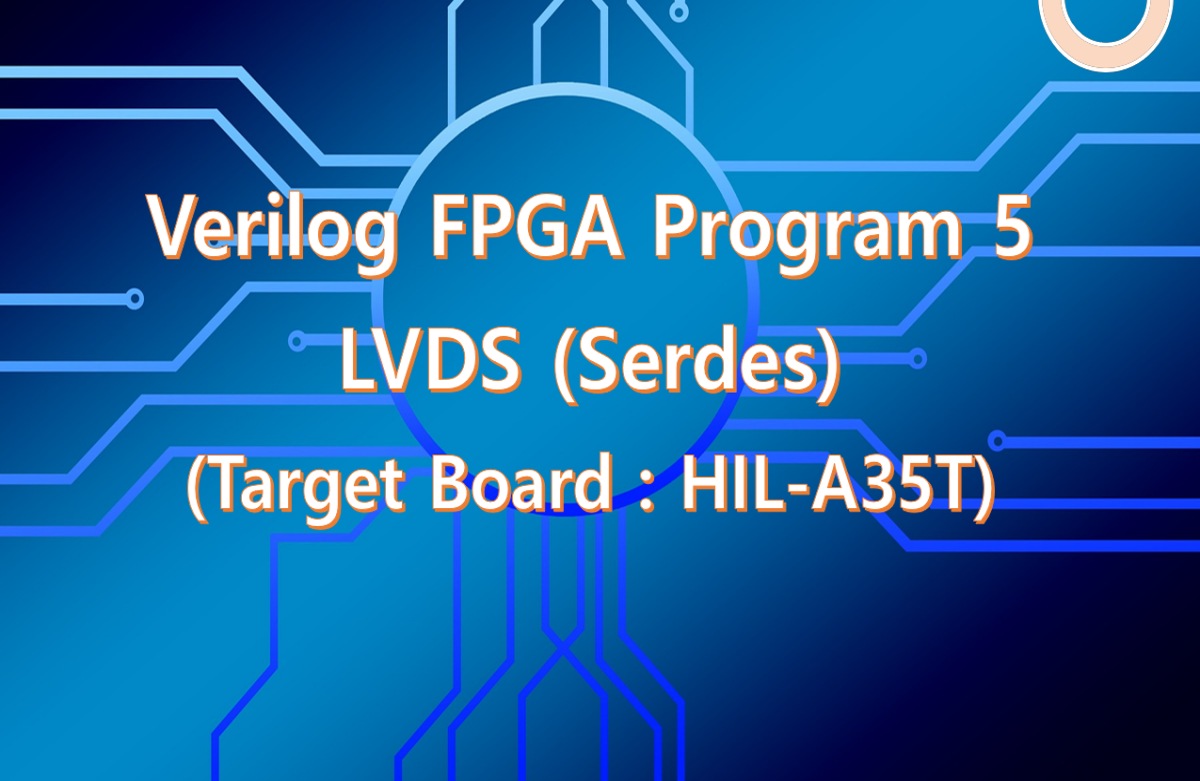
STM32 FFT Implementation
alex
Implement FFT using DSP Library in STM32.
中級以上
FFT
Implement LVDS (Serdes) in FPGA.


LVDS Implementation
Serdes Implementation
Verilog HDL is an FPGA programming language. It can be used to create not only FPGAs but also ASICs. There are many developers who are interested in Verilog or want to improve their skills in the field.
However, Verilog and FPGA are very special fields, so it is very difficult to find a lecture that explains them in detail. FPGA manufacturers provide documentation, but there are so many documents in English that it is difficult to know which document to look at.
I have been working as a developer in the industry for over 20 years and currently run a one-man business. I created this course because I wanted to share the knowledge I have accumulated so far with people who are working as developers or preparing to become developers.
The course consists of a total of 5 lectures.
This lecture is the fifth lecture and is about LVDS (Serdes). LVDS is used for low-voltage, high-speed serial communication. FPGA supports Serdes to implement LVDS. Understand LVDS, create Serdes, and understand its operation through simulation. Finally, implement LVDS transmission and reception and verify its operation on the development board (HIL-A35T).
If there is anything you do not understand in the lecture, please post a question through the Inflearn community or the cafe I run and I will answer it.
💾 Please check before taking the class!
This lecture is a text lecture in electronic document format . All source files explained in the lecture will be provided to those who take the lecture. The lecture will be produced as a video in the future.
The tool used in this lecture is vivado 2018.3.
The board used for the practical training of this lecture is HIL-A35T, which we developed for the lecture. You can purchase it from our smart store (Smart store link: https://smartstore.naver.com/ihil)
Lecture materials can be downloaded from 'Section 0 - Material Sharing Link - Attachments'.
There are very few documents that cover implementing LVDS in FPGAs. In fact, Xilinx provides a lot of documents, but they are so numerous and in English that it is difficult to know which documents to look at.
This lecture covers everything about LVDS. It explains LVDS, creates Serdes, understands the operation through simulation, and downloads the result to the target board to implement LVDS transmission and reception. Through this process, you can understand everything about LVDS and use it in the field.
For those who want to learn Verilog, LVDS is a very good skill. There are many people with a lot of development experience who have not encountered LVDS. We provide an opportunity to upgrade Verilog to the next level.
For those who purchase this course, we will provide all the sources explained in the course. The sources provided are composed of materials that have been coded and verified from the beginning while producing the course. In addition, they are composed of codes that can be used immediately in the field. We hope that you will become a master of LVDS through this course.
Lecture 1: Verilog FPGA Program 1
Implementing basic functions
Lecture 2: Verilog FPGA Program 2
Microblaze
Lecture 3: Verilog FPGA Program 3
DDR Controller
Lecture 4: Verilog FPGA Program 4
MCU Porting
Lecture 5: Verilog FPGA Program 5
LVDS / Serdes
Basics (Appendix): Basics of FPGA Utilization Using Verilog
Arty A7-35T board
Verilog FPGA Program 1 (Arty A7-35T)
Verilog FPGA Program 2 (MicroBlaze1, Arty A7-35T)
Verilog FPGA Program 2 (MicroBlaze2, Arty A7-35T)
Verilog FPGA Program 3 (DDR Controller, Arty A7-35T)
Verilog FPGA Program 4 (MCU Porting, Arty A7-35T)
Zynq mini 7020 board
Verilog FPGA Program 1 (Zynq mini 7020)
Verilog ZYNQ Program1 (Zynq mini 7020)
HIL-A35T board (developed in-house for lectures)
Verilog FPGA Program 1 (HIL-A35T)
Verilog FPGA Program 2 (MicroBlaze, HIL-A35T)
Verilog FPGA Program 3 (DDR Controller, HIL-A35T)
Verilog FPGA Program 4 (MCU Porting, HIL-A35T)
Verilog FPGA Program 5 (LVDS/Serdes, HIL-A35T)
Section 1. HW Configuration
Describes the development board (HIL-A35T).
Section 2. LVDS Review
Understand the ins and outs of LVDS.
Describes important information about Serdes (ISERDESE2, OSERDESE2).
Section 3. LVDS Implementation
Create a Serdes IP and understand its operation through simulation.
Implement LVDS transmission and reception code and verify it with simulation.
Download the results to the target board and check the results.
Section 4. 2-Lane, 4-Lane Implementation
Explain how to extend Lane and see the results on the board.
Section 5. Implementing maximum transfer rates
Describes how to achieve maximum transfer speed and verify the results on the board.
Section 6. Implementing LVDS reception without using Serdes
Implement LVDS reception without using Serdes IP.
Who is this course right for?
Those who want to improve their FPGA skills
Those who need LVDS (Serdes) implementation
Need to know before starting?
Verilog language
FPGA
1,731
Learners
76
Reviews
127
Answers
4.8
Rating
19
Courses
저는 지난 20여년 동안 대기업, 중소기업에서 개발자로 일해왔고
현재는 작은 기업의 대표로 있습니다.
주요 경력사항은
Verilog HDL을 이용한 FPGA 설계
CCTV용 ISP ASIC 개발 (약 10년)
OLED Display 검사장비 개발 (약 3년)
FPGA를 이용한 장비 개발
MCU FW
STM32
PIC32
AVR, ATMEGA
DSP (TI)
Windows Application Program
Visual Studio MFC, C++
입니다.
All
108 lectures
Course Materials:
All
4 reviews
5.0
4 reviews
Reviews 2
∙
Average Rating 5.0
Reviews 1
∙
Average Rating 5.0
Reviews 2
∙
Average Rating 5.0
$63.80
Check out other courses by the instructor!
Explore other courses in the same field!